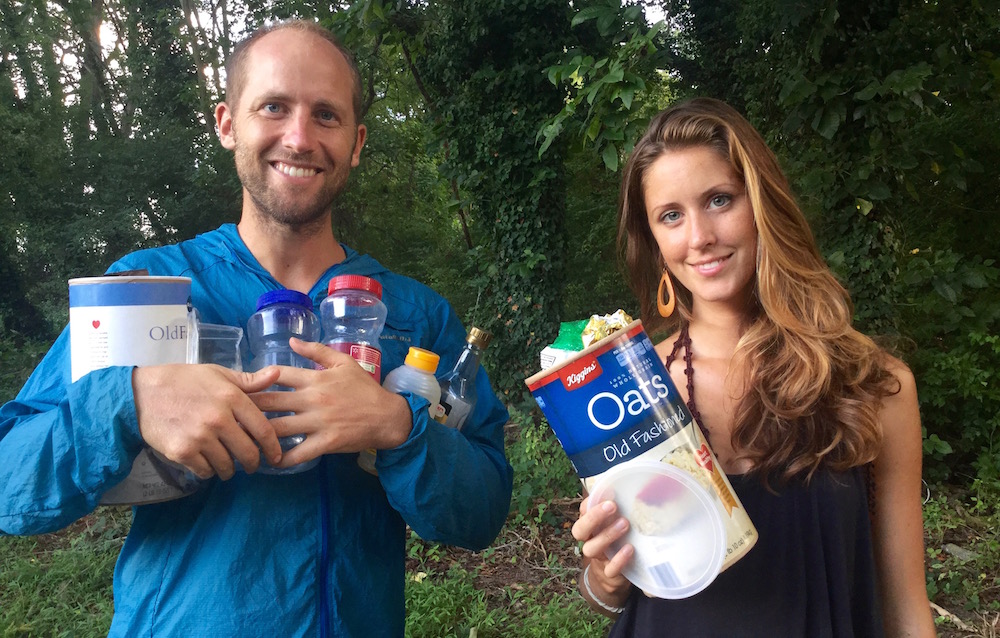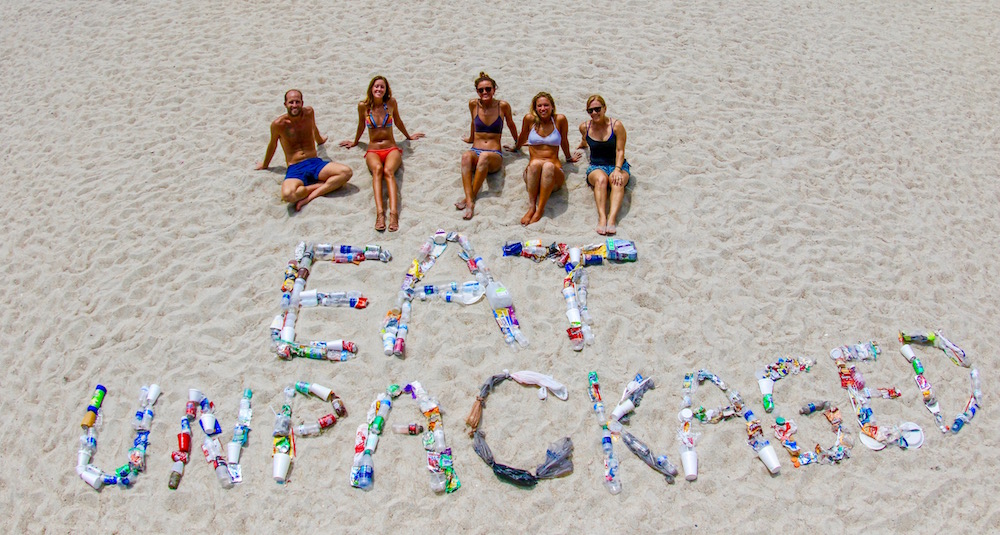Resource Guide to Eat Near-Zero Waste in a Community with Minimal Food Resources
Trying to go zero waste in a low income neighborhood vs. a wealthy neighborhood can result in two very different stories. To read a guide written by someone in downtown posh Manhattan that only sees zero waste through their own lens could prove to be a little disappointing for someone living in a low income area. I often hear that going zero waste is only something that wealthy people can do. For the most part I disagree with this statement however there is some truth in it. In certain ways going zero waste is much easier for people who live in wealthier neighborhoods that have more options. For example many low income areas don’t have easy access to a grocery store with a bulk refill section and thus have to buy more packaged foods. This one variable alone makes it much more difficult to zero waste grocery shop.
Absolute zero waste is something that most of us are unlikely to attain but that doesn’t stop any of us from drastically reducing our trash. The average US American makes 4.5 pounds of trash per day and whether in a low income or ultra wealthy community we can all drop that down to less than 1 pound per day through dedication and education. This guide is designed to help people who live in lower income areas to drastically reduce the trash they create from food. It is particularly geared for people who want to eat healthy, eat on a very small budget, and reduce their trash greatly.
This summer I lived in Bankhead, Atlanta for a month while trying to eat healthy on $4/day. That’s the amount that the average US American gets on food stamps. I found that it was nearly impossible to have zero waste but in 30 days this is all the trash both my girlfriend and I created from food. Cheryl is holding the trash and I’m holding the recyclables.

I didn’t shop at any health food stores or farmers markets. This is near-zero waste shopping at Walmart and big chain grocery stores like that. To me this is a great example to show how we can all reduce the amount of trash we create whether we live in a low income neighborhood that might be a food desert or in a neighborhood with an abundance of health food stores and farmers markets. Zero waste has become a very sexy term and something that thousands and thousands of people are striving for. But getting to the point of zero waste starts with small changes made in our daily habits. Here are 20 tips to help you reduce your trash no matter where you live!
- Ditch bottled water and get a reusable water bottle instead. If the tap water in your city is not pure get a purifier. I recommend a Berkey filter. According to The Story of Bottled Water
bottled water is 2,000 times more expensive than tap water. That’s like paying $10,000 for a sandwich. - Buy unprocessed food that has the least packaging. A simple example of this would be buying apples instead of apple sauce or potatoes rather than potato chips. Another would be buying brown rice and beans rather than more processed and packaged foods like Hamburger Helper or Macaroni. Typically simple unprocessed foods have a lot less packaging but also create many more meals than the processed foods do.
- Buy unpackaged food when it works. In most scenarios bulk, unpackaged food is cheaper than the packaged options because you’re not paying for all the packaging and marketing. This does not always apply though. For example I have seen many times that a bag of apples is less expensive per pound than single unpackaged apples. For someone shopping on a very small budget and struggling to make sure they get enough fruits and veggies it really makes sense to purchase the bagged apples even though it will make some trash. This is an example of where it makes sense to create a little trash. This rarely, if ever, applies to processed and packaged foods though if you are trying to eat healthy. A bag of apples or a bag of rice can sometimes be cheaper than unpackaged in bulk but rarely, if ever, will processed items like frozen pizzas.
- Buy food in bulk. In many areas there is not access to a store with an actual bulk food section. This blog has photos of a bulk food section if you are unsure of what they are. Basically it’s a section within a store that has often hundreds of different unpackaged foods that you can purchase. They have bags that you can fill or ideally you bring your own containers and fill them up. By bringing your own containers all of this food can be completely zero waste. Bulk sections include grains, nuts, seeds, pasta, herbs, spices, and much more. If you don’t have access to a store with a bulk section then you can buy your foods in larger quantities to reduce packaging. For example a five pound bag of rice will have less packaging than five-one pound bags. Another example would be choosing the single bag of raisins with many servings rather than individual serving boxes of raisins.
- Cook at home as much as possible. It’s much easier to know what you are actually eating and avoid creating trash when you cook for yourself rather than going out to eat. If you do eat out, especially avoid fast food restaurants and any restaurant that creates a lot of trash.
- Choose restaurants that use washable dishes and cutlery rather than disposable. If they don’t exist then bring your own dishes and utensils and ask them to put your food on them instead.
- Bring a reusable to-go container if you do go out to eat so you can take your leftovers home without having to get a disposable container from the restaurant.
- Avoid take out and delivery all together. Take out and delivery almost always create a lot of trash.
- Compost all of your food waste. See my guide to composting for information on this. For those worried about composting, doing a crappy job at composting is always better than throwing food scraps in the trash.
- Ditch all one time use items. This includes items like tin foil, plastic wrap, and plastic baggies. Anything that you use just once and then throw away is a huge waste of money and creates a lot of trash. Use reusable tupperware for leftovers and storing things in the fridge. Kids lunches can easily be zero waste by using reusable containers and a reusable lunchbox rather than disposables.
- Say no to straws. Use and bring your own metal or bamboo reusable straw if you love straws, otherwise just go without. Simply say, “No straw please” whenever you get a drink.
- Use reusable dishes and utensils at home or even when you do a picnic. Then you won’t need the paper, plastic, or styrofoam plates, bowls, cups, and utensils.
- Use washable cloths rather than paper towels, napkins, and tissue. You’ll start saving money right away. You don’t need to go out and buy reusable cloths either. Old t-shirts and cloths work just fine.
- Bring your own cup for coffee, tea, and any other drinks. Disposable cups, lids, sleeves, and straws are all completely unnecessary.
- Bring your own bags to the store. The average US American uses 100s of bags per year. Bringing your own can keep a ton of trash out of the landfill or off the streets of your community.
- Make your own natural soda such as ginger beer or kombucha and ditch the soda bottles. By making your own you can actually be drinking something healthy while satisfying your desire for something bubbly and refreshing.
- Recycle. Most of you reading this are probably already recycling but if you aren’t, it’s never too late to start. I met a 50 year old woman recently who said that she just recycled for the first time because of my Trash Me campaign. When aiming for zero waste we all should be trying to reduce recycling rather than make more if it. Recycling is a highly energy and resource intensive process so its best to find alternatives without any of the packaging all together. Reduce, reuse, and lastly recycle!
- Grow your own food. When you grow your own food you won’t have to worry about packaging at all. The earth creates natural packages such as peels and rinds for many fruits and vegetables. And then those natural packages are returned to the soil to grow more food.
- Save your jars to be used for storing foods. Jars can be used for so many things including to go containers, left overs, cups, and preserving food.
- Make your own foods. The more you make your own foods the more connected you’ll become with your food and the more independent you’ll become from the food corporations. Making your own food will mean you’ll actually know what you are eating and will make it a lot easier to avoid nasty ingredients that are no good for your body. Most of the things we buy at the store seem hard to make but the reality is that they are easier than you’d think. Check out my video on how to make your own bread.
The good news is that most of these things actually will save you a lot of money while reducing your trash. And for those that are having a hard time affording food, doesn’t it make sense to stop throwing out your money on disposable items? By changing your habits and saving money in all these ways you’ll actually find that you have more money for healthy food. Reducing your trash not only serves your own health, and saves you money but it’s also a way to live in a manner that causes less destruction to the earth and the other creatures that we share the earth with.
This summer my friends and I picked up trash from the beach and sorted out everything that was food packaging. This is just what we found in an hour at one beach:
Food packaging has been shown to kill and harm a lot of creatures. Plus it takes a lot of unnecessary energy and resources to make all of this packaging. A lot of it is made with fossil fuels which go hand in hand with disasters like oil spills.
Reducing our trash is beneficial to ourselves, our communities, other species, and the earth as a whole! I encourage you to print out this list and hang it up in your kitchen to remind yourself to strive for more. You might not be able to start all of these things today but you can start at least one. And once you’re successful with that one start the next. Before you know it you could be doing all 20!
For even more tips and details read my Near-Zero Waste Guide